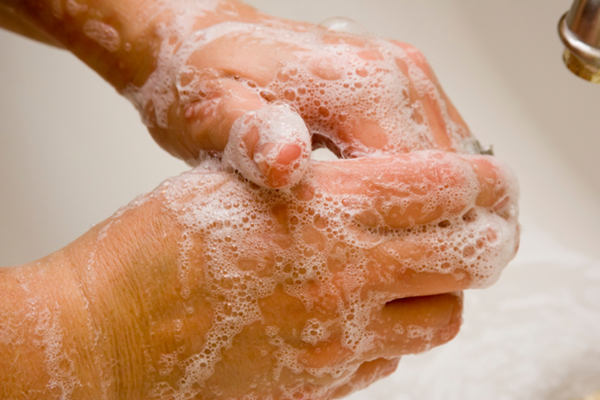Hand washing at work – The key to staying safe
Like many workers around the world I’ve been working from home to stay safe and to protect others. As part of this regimen I wash my hands frequently. I learned as a child that this was the main way to prevent getting sick from many diseases, and this now includes COVID-19. Soon I will be returning to my office.
So, I began thinking about the facilities at work. Then I asked myself; what about the 1.6 billion people who live in places where they don’t have safe water, at home or at work? Or the 4.2 billion people who don’t have access to safe sanitation? How do they prevent contagion? And if they are returning to workplaces that have not been inhabited for months, will the water be of adequate quality?
It turns out, I am not the first person to ask such questions. A bunch of ILO standards and tools – including nine Conventions, numerous Recommendations and 19 Codes of Practice – detail requirements for hand-washing facilities in workplaces and workers’ housing. These instruments cover a wide range of economic activities, ranging from agriculture and office work to mining, maritime activities and road transport. This is no small achievement when we consider that every word and detail has been negotiated by governments, workers and employers from the ILO’s 187 member States.
These are some examples of ILO standards that provide COVID-relevant guidance:
• The Hygiene (Commerce and Offices) Convention, 1964 (No. 120) requires work premises and equipment to be properly maintained and cleaned, supplied with sufficient, wholesome, water or other drinks, and sufficient and suitable washing and sanitary facilities.
• The Workers’ Housing Recommendation, 1961 (No. 115) advises employers on providing adequate sanitary and washing facilities for workers in employer-owned accommodation.
• The Occupational Safety and Health Convention, 1981 (No. 155) requires employers to provide appropriate training and information on safety and health, and allow workers and their representatives to inquire into all aspects of work-related safety and health, in accordance with national law and practice.
• The Employment and Decent Work for Peace and Resilience Recommendation, 2017 (No. 205) protects the safety and health of workers engaged in crisis response.
But it’s not just the responsibilities of employers that are covered. Governments are also asked to provide advice on workplace hygiene and monitor employer facilities. And workers are required to comply with workplace safety and health requirements.
- The ILO’s Employment-Intensive Investment Programme launched a COVID-related initiative in South Africa that hired 20,000 young people to help with the distribution of sanitizers and soap, provide education on hygiene-prevention measures, disinfect high risk areas and conduct clean-up campaigns.
- The ILO’s Better Work Nicaragua programme has helped the national garment sector develop an emergency COVID-19 response. Prevention measures include frequent handwashing and guidance for employers.
Many collective agreements also include clauses on sanitary facilities.
Workplaces have much to contribute towards preventing COVID-19 infections. Until treatment or a vaccine is available, solidarity is the only cure. As countries reopen for business, governments, workers and employers must join forces to stifle the pandemic with safe working practices and facilities. Ensuring all workers have the facilities to wash their hands safely and adequately at work will be an important tool in the struggle against this and future pandemics.
By Carlos Carrion Crespo, ILO Specialist for public services and utilities
| 


